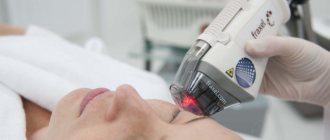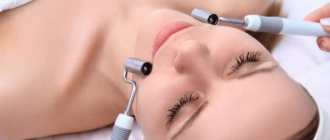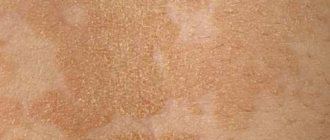From this article you will learn:
- types of fractional lasers and the principle of their operation,
- Fraxel laser: reviews, rehabilitation, before and after photos.
The Fraxel laser device can reduce the severity of wrinkles, reduce the depth of acne scars, eliminate age spots, and also treat many other skin problems. The Fraxel cosmetology laser is a fractional type laser and is available in three modifications: “Fraxel re'fine”, “Fraxel re'store” and “Fraxel re'pair”.
The peculiarity of fractional lasers is that they divide the laser beam into thousands of microscopic fractions (small rays, each of which is one tenth the diameter of a hair) and direct these fractions simultaneously to a specific area of the skin. As you will see below, this leather processing technology has global benefits.
Fractional laser can be ablative or non-ablative. Fraxel restore and Fraxel refine are non-ablative. Such lasers work deep in the skin without disturbing the integrity of the stratum corneum of the epidermis. But “Fraxel repair” is ablative, and its effect occurs with a violation of the integrity of the stratum corneum of the epidermis. The latter seems less safe, however, the effectiveness of Fraxel repair is much higher than other Fraxel devices.
Fraxel: indications for the use of fractional laser
Fraxel, like many other fractional lasers (manufactured under other brand names), is commonly used to treat the following problems:
- to reduce wrinkles and deep lines on the face and neck (Fig. 4-5),
- for general skin rejuvenation and increasing its elasticity,
- stretch marks (striae) after pregnancy (Fig. 6),
- scars and scars after operations (Fig. 7),
- acne scars (Fig. 8),
- enlarged pores,
- age spots, melasma (Fig. 9),
- spider veins,
- treatment of skin keratosis.
Fraxel: before and after photos
Why laser
Fraxel is a new word in hardware cosmetology. Its effectiveness has already been confirmed by millions of patients. The laser is perfect for any skin type, including sensitive ones.
It is possible to use microflows not only on the face, but also on the neck, chest, and arms.
Participation in sessions will not affect your daily life in any way. You do not need to undergo surgery and there is a recovery period.
The Fraxel effect is literally new skin. Smooth relief, fresh complexion and elimination of minor defects in the form of wrinkles or acne marks. Improvement is observed within 2–3 months, and the result lasts up to 1 year.
Three modifications of the Fraxel laser –
There are three main original Fraxel devices, which are used in different clinical situations, and depending on the severity of the problem.
Fraxel Re'fine –
This is a fractional non-ablative erbium laser, with a wavelength of 1410 nm and a single pulse energy of 5 to 20 mJ (Fig. 10). This laser works to a depth of 0.7 mm, and the stratum corneum of the epidermis remains intact. This is the softest type of Fraxel laser, after which healing occurs as quickly as possible, and the procedure itself is as painless as possible and lasts only 20 minutes.
Fraxel refine is used to smooth out fine wrinkles around the eyes, tighten the skin of the eyelids, remove age spots and other pigmentation on the skin, and treat melasma. Also, this type of laser generally improves the condition of the skin and can be used primarily to prevent aging.
Thus, the indications for using Fraxel refine are exactly the same as for photorejuvenation techniques using IPL devices. The latter, as a rule, are much cheaper than Fraxel laser treatment. However, Fraxel can be used on people of any skin color, and IPL devices are not recommended for people with dark skin.
Fraxel Restore –
This is a fractional non-ablative erbium laser, with a wavelength of 1550 nm and a single pulse energy of 4 to 70 mJ (Fig. 11). The depth of exposure, depending on the settings, ranges from 0.4 to 1.4 mm. This type of laser is used to treat similar problems that Fraxel refine can eliminate, but only more severe. For example, to smooth out more pronounced wrinkles.
Fraxel restore reviews also claim that it does an excellent job of removing small atrophic acne scars, hypertrophic scars, and is also used to treat stretch marks after pregnancy, pigmentation and skin keratosis.
Fraxel Re'pair –
This is a fractional laser of the ablative type, belongs to the group of CO2 (carbon dioxide) lasers with a wavelength of 10600 nm and a single pulse energy of up to 225 mJ (Fig. 12). Unlike classic ablative lasers, which work only deep into the epidermis, Fraxel Repair works in both the epidermis and dermis. The depth of exposure ranges from 0.4 to 1.6 mm, and it can be adjusted by the settings of the device, on which modes can be selected: “medium ablation” or “deep ablation”.
Medium ablation mode primarily targets the lower layers of the epidermis and upper layers of the dermis, which is suitable for smoothing shallow wrinkles (such as around the eyes), reducing pore size and improving skin texture.
Fraxel repair in the “deep ablation” mode acts primarily on the middle layers of the dermis, which is excellent for smoothing out deep wrinkles. When using this mode, there is also a pronounced skin lifting effect, which you will notice immediately after the procedure. The device is also successfully used to remove age spots and spider veins, as well as to remove hypertrophic scars and scars.
Analogues of the Fraxel Repair laser produced by other manufacturers -
- Active and Deep FX (Lumenis),
- Quadralase (Candela),
- Pearl Fractional (Cutera), etc...
Comparison of Fraxel refine and Fraxel restore – with Fraxel repair…
Fraxel repair fractional ablative CO2 laser is more aggressive than erbium non-ablative lasers Fraxel refine and Fraxel restore, which leads to greater synthesis in tissues of inflammatory mediators, proteins and factors that stimulate stem cells and fibroblast function. Accordingly, the effectiveness of the procedure with the Fraxel ablative CO2 laser will be 2 times higher, although healing will take 2-3 times longer. In addition, it is “Fraxel repair” that gives the best skin lifting effect.
Operation process of fractional CO2 laser: video
Types of laser fractional photothermolysis
Fractional photothermolysis is divided into 2 types:
- Ablative. Its wavelength is 2,940 nm. This type of radiation is absorbed by water, so the beam affects all levels of the skin. The master can adjust the depth of penetration, affecting a specific layer, for maximum effect.
- Non-ablative. The wavelength is adjustable from 1,320 to 1,540 nm. This type of radiation affects the deep skin structures, but does not affect the upper layers. This way, the production of elastin and collagen is stimulated, and cell turnover is significantly improved. Due to this, the skin becomes tightened, its laxity and sagging are eliminated.
Skin restoration occurs faster with non-ablative treatments. But after ablative treatment, peeling and redness are possible. However, both types are highly effective.
How Fraxel Fractional Laser Works –
To understand how it all works, you need to know the structure of the skin (Fig. 13). The skin consists of 3 layers: → epidermis (surface layer), → dermis (middle layer), → subcutaneous fatty tissue.
The epidermis consists of numerous layers of keratinocytes of varying degrees of differentiation. The epidermis also contains melanocytes (so-called pigment cells), which are responsible for skin color. The dermis consists of collagen and elastin fibers, fibroblasts, which provide the skin with strength, firmness and elasticity (24stoma.ru).
As our body ages, the appearance and general characteristics of the skin change. The epidermis becomes thinner, various spots on the skin become more noticeable, and the collagen content in the dermis by the age of 45 decreases by almost half. Skin moisture is noticeably reduced due to a decrease in hyaluronic acid content. All this leads to the gradual appearance of wrinkles, the formation of deep lines on the face, and the skin becomes flabby.
Principle of operation -
Using special technology, the laser beam is split into thousands of microbeams, each of which is one-tenth the size of a human hair.
That is why such lasers are called fractional. The meaning of such fractionation is that areas of destroyed tissue are subsequently surrounded by areas of undamaged viable tissue, the cells of which will ensure rapid restoration of damaged areas. When using non-ablative Fraxel lasers (Fraxel refine and Fraxel restore), numerous micro-areas of tissue coagulation (MTZ microthermal zones) are formed - in the form of columns perpendicular to the skin surface (Fig. 14). And when using the Fraxel repair ablative laser, not only injury occurs, but also a certain percentage of tissue is removed, which leads to a pronounced skin lifting effect.
In response to such damage, the body begins to synthesize more proteins, mediators and signaling molecules, which cause the activation of skin stem cells and increase the rate of their division. A large number of new cells begin to gradually synthesize the structural elements of the skin, such as collagen and elastin. Moreover, after using the Fraxel repair ablative laser, these processes are more pronounced.
When using non-ablative Fraxel lasers (Fraxel refine and Fraxel restore), coagulation areas occur predominantly in the dermis without compromising the integrity of the stratum corneum of the epidermis. And when using the Fraxel repair ablative laser, coagulation occurs with a violation of the integrity of the stratum corneum, which leads to the formation of microholes in it up to 200 microns in size, which are completely restored in about 24-45 hours (Fig. 17). Damage to the dermis is restored in 4-7 days.
How is the procedure done?
Before starting the procedure, the master visually assesses the condition of the patient’s skin, determines the methods of exposure, and the depth of penetration of laser beams. It is also determined how many sessions may be needed to eliminate a particular problem.
The procedure itself is carried out in several stages:
- Using a special composition, the skin is cleansed and degreased.
- An analgesic ointment with lidocaine is applied to the areas that will be treated. Wait 40 minutes. This will prevent soreness.
- The ointment is applied, and the skin itself is lubricated. This allows the device to easily glide over the surface of the skin.
- Then work is done with the device itself. Initially - the face, using a small nozzle (sequence: forehead, cheeks, chin). Afterwards, the neck and/or body are treated with a larger nozzle.
- The eyelid area is treated last, using a narrow nozzle.
- After the laser treatment is completed, the lubricant is removed from the skin.
Stages of the procedure using Fraxel –
Preliminary preparation
The problem area is determined and adapted to the template to determine the target area of correction. Fraxel photos must be taken before the procedure. The patient should remove all jewelry and wash their face thoroughly with soap and water before the procedure.
For patients with skin pigmentation problems, treatment with a whitening cream (eg hydroquinone) or a pre-chemical peel may be required. In patients at high risk of developing herpes, Acyclovir can be used as a prophylaxis against herpes.
Next, an anesthetic is applied to the treated area. You must wait 45-60 minutes before the full anesthetic effect occurs. Then the anesthetic is removed and a special gel is applied to the treatment area, which ensures that the Fraxel laser handle glides easily over the surface of the skin.
Fractional laser treatment procedure
Treatment time depends on the area being treated. For example, a full face usually takes about 30 minutes, a neck about 20 minutes. The degree of pain during the procedure will depend on the energy power of the laser light pulses (from 4 to 70 mJ; set on the equipment). Sometimes a cooling device (such as a Zimmer) is used to reduce discomfort during the procedure.
Typically 4-5 Fraxel treatments are required, depending on the level of energy used and the condition of the skin being treated. These procedures are performed within a month.
Fraxel: reviews and consequences
For about 1 hour after the procedure, patients may experience a sensation similar to that of sunbathing. During healing and for several months after the procedure, it is recommended to apply a moisturizing sunscreen with a protection level of at least 50 SPF. It is necessary to protect the skin from exposure to the sun with clothing and wide-brimmed hats.
Swelling may be present and usually resolves within 2-3 days. Expect your skin to have a pink tint for 3-5 days. In addition, the epidermis is restored within up to 40 hours, which at the beginning may have a tan color (this disappears in 3-14 days). As a rule, peeling of the skin is observed, but this problem is easily solved by using a moisturizer. According to the cosmetologist's indications, after ablative therapy with the Fraxel repair laser, skin peeling can be applied using water, Vaseline and gauze 1-2 times a day.
Fraxel: photo immediately after the procedure, and in dynamics
Benefits or harms of laser
Advanced technology allows for uniform action on the desired areas of the skin. And thanks to the gentle effect and small diameter of the treated area (70 - 150 mn), scarring does not occur. Regeneration takes place in the shortest possible time and rarely takes more than a day.
The barrier function of the skin is not affected by radiation, so infection is completely excluded. The laser does not affect internal organs, acting exclusively on the skin.
Therefore, we can say that laser exposure brings significantly more benefits than harm.
Fractional laser: reviews
Results after Fraxel - reviews confirm that the onset of the effect is progressive. The most visible result appears within 3-4 months after the procedure. During this period, complete healing and replacement of tissue occurs with the formation of new cells with new collagen and elastin. However, after using Fraxel repair, the lifting effect can be noticed immediately after the procedure.
Studies show that a 20-40% overall improvement in fine lines and wrinkles was achieved after a mild rejuvenation procedure. More aggressive procedures (with high light beam energy) performed by fractional laser - reviews have shown from 30 to 70% of visible improvement.
Fractional laser can be combined with surgical rejuvenation methods, as well as non-surgical procedures, such as plasma lifting. In the latter case, the desired result can be achieved faster and with fewer procedures. Laser skin resurfacing is not a cheap pleasure, so the number of procedures can also matter.
Contraindications
However, there are a number of contraindications in which procedures with Fraxel are strictly prohibited:
- cancerous tumors (both benign and malignant);
- hormonal disorders;
- acute form of infectious diseases;
- inflammation in the manipulation area;
- dermatological diseases;
- pathologies of blood vessels and heart;
- epilepsy;
- tendency to various bleedings;
- autoimmune diseases;
- pregnancy and breastfeeding;
- problems with blood clotting.
Also, you should not carry out the procedure during menstrual flow, although this is more of a recommendation than a contraindication.
Side effects and complications –
Laser Fraxel reviews confirm that the procedure is usually quite well tolerated by patients. In the near future after the procedure, you can shave and apply makeup. In most cases, patients can return to work immediately after treatment or the next day, which will depend on the power of the laser light pulses chosen by the cosmetologist.
Side effects and consequences after Fraxel –
- excessive peeling of the skin (sometimes the appearance of crusts),
- contact dermatitis,
- exacerbation of herpes, acne,
- infectious skin lesion,
- temporary post-inflammatory skin pigmentation,
- swelling for 1 week after treatment (in such cases, the use of ice and antihistamines helps).
Important: despite the fact that fractional laser is most often used to treat various pigmentation disorders, the treatment itself in some cases can lead to post-inflammatory pigmentation.
General recommendations before the procedure
Before the procedure, it is important to consult with your doctor and make sure that there are no contraindications to this type of treatment. It is advisable to start taking antiherpes drugs a few days in advance in order to eliminate inflammation.
It would not be superfluous to have a preliminary consultation with a master cosmetologist who will perform the procedure. It is likely that he will give additional recommendations.
Fractional laser: price
Fraxel prices in Moscow for procedures differ depending on the treatment area and the type of fractional laser itself. Below we have indicated the cost of the procedure using the Fraxel restore device. Depending on the severity of skin changes, 3-5 procedures may be needed to achieve the desired result.
Fractional laser: procedure price
- the entire face, including eyelids, will average 25,000 - 30,000 rubles,
- only crow's feet near the eyes - about 4500-6000 rubles,
- nasolabial triangle - about 6000 - 8000 rubles.
Indications
Fraxel treatments are usually prescribed for people over 30 years of age. This is an ideal remedy for those with damaged, sunburned or simply aging skin.
Using the device, you can eliminate:
- visibility of crow's feet near the eyes;
- severe signs of sunburn;
- senile pigmentation;
- enlarged pores;
- consequences of acne;
- actinic keratosis.
In addition, you will definitely notice an improvement in your complexion. If there were postoperative scars or stretch marks, they will become smaller. Laser also works well against the effects of acne and other skin diseases. The number of sessions is determined after a 3D skin diagnosis and conversation with the patient.
The doctor answers
Question: Hello! I'm interested in the question: is Fraxel capable of ridding me of a scar after a burn? The fact is that the scar is old and of considerable size. How expedient is the procedure?
Reference
Answer: Hello! In this case, it is advisable to carry out procedures using the Re Pair device. You should first consult with a cosmetologist - he will tell you exactly how many procedures will be required. Small scars can be completely reduced, but for large and deep ones, the procedure will significantly improve their aesthetic appearance.
Question: Hello! Can Fraxel help get rid of postpartum stretch marks on the thighs and abdomen if quite a lot of time has passed since their appearance?
Reference
Answer: Hello! Fraxel can significantly improve the aesthetic appearance of the skin, but, unfortunately, it is not capable of completely eliminating significant stretch marks. In this case, it is better to consult with a cosmetologist who will help you choose the best correction method. It is better to use Fraxel on stretch marks in the early stages, in which case the result is almost ideal; it is more difficult to deal with old stretch marks.
Question: Hello! Deep expression wrinkles appeared. Does it make sense to undergo the Fraxel procedure? Will he help me?
Reference
Answer: Hello! There is definitely a point. Fraxel has an excellent effect on facial skin. The effect will be noticeable after the first session. However, if you carry out a set of procedures, the skin will become much more elastic, and deep wrinkles will almost completely disappear.
Prices for the procedure
The cost of the procedure varies depending on the location and complexity. However, you can trace the average prices that are typical for most salons:
- Scar removal – RUB 1,000.
- Chin – 6,000 rub.
- Forehead – 10,000 rub.
- Neck, décolleté – RUB 14,500.
- Cheeks – 15,000 rub.
- Nose – 8,000 rub.
- Forearms and hands – 15,000 rubles.
- Eyelids – 10,000 rub.
- Face – 22,000 rub.
- One area of the body – 10,000 rubles.
The area of the abdomen, buttocks and chest is calculated per 1 cm2 (about 60 rubles). Many salons offer to combine procedures, thus receiving a discount on treating two or three zones in one session.
How often can the procedures be done?
The duration of the procedure itself usually does not exceed 20 minutes. But the next session can be held no earlier than after 5 weeks. The course of treatment is selected individually for each patient, and on average consists of 4-6 sessions.
Laser exposure has a cumulative effect, so the results can last up to 15 years.
Comparison of fraxel therapy with other rejuvenation techniques
Analogs of Fraxel in terms of the effect obtained are:
- Thermage. Although it is an analogue, it is more effective as an additional procedure to Fraxel.
- Nanoperforation. Although it is a more gentle procedure, it is not as effective, and the effect lasts less time.
- Fractional skin mesotherapy. A less aggressive procedure, moreover, more affordable, but it has a much less pronounced effect.
- DOT. Combines the effects of radio waves and lasers. This procedure has a large number of contraindications.
An analogue of Fraxel is also the Palomar laser. However, each patient must determine for himself what is best for him personally, since the devices are similar in the method of influence. Although Panomar has advanced functionality.










